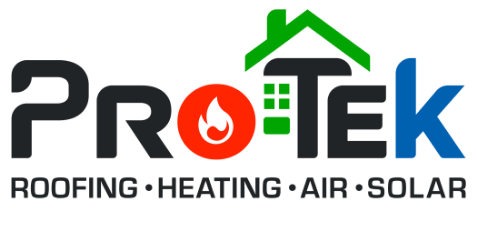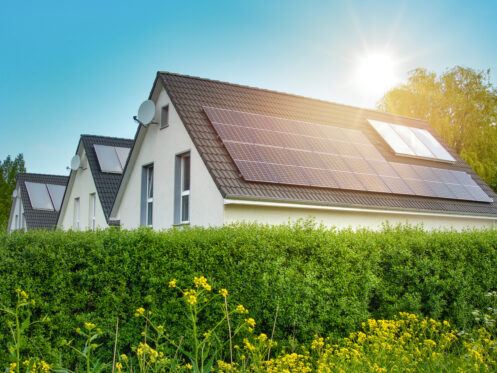Installing new solar panels on your home could bring you many benefits. Not only will you save on your monthly electric bill, but you can significantly reduce your carbon footprint.
A carbon footprint represents the amount of non-renewable waste and emissions, such as methane and carbon dioxide, a person generates. In the United States, the average carbon footprint is about 16 tons annually. The ideal is below 2 tons. That might be a tough ask, but solar panels can help you achieve your energy goals.
Solar panels can transform the sun’s light into electricity, and while exact calculations vary based on the amount of sun exposure your home receives and the size of the installation, they can alter how you think about and use energy. Here’s what you need to know.
1. Lowered Lifecycle Emissions
Once installed on your Tampa home, solar panels will produce clean energy, but the processes used to mine the materials, build the solar panels, deliver them, and install them on your home will all cause varying emissions. The quantity of emissions produced during this time is called the lifecycle emissions. However, the clean energy produced by the panels can help you combat excessive emissions by decreasing your reliance on the grid or eliminating your use of it entirely. The result is dramatically reduced lifecycle emissions.
In most cases, these emissions will be equivalent to about two to three years of solar panel use, at which point you will pass the break-even point and begin to burn truly clean energy. Essentially, using clean energy will ultimately offset all of the emissions generated for solar panel production, which will dramatically reduce your carbon footprint and reliance on carbon-based technology.
The timeline can fluctuate for a few reasons. For one thing, newer solar panel production facilities don’t necessarily rely on the same carbon-producing functions that older facilities did, and they can use recycled materials. Recycling materials reduces the need to mine resources and deliver them around the globe. Finally, technicians can use electric vehicles to deliver materials. All of this will lower the lifecycle emissions of your system and bring that break-even point closer to the moment of installation.
The length of life of the solar panels also makes a difference. As solar panels become more reliable and last longer, you do not need to waste energy resources for replacements. This creates a major reduction in carbon emissions and helps reduce your footprint for each extra year you rely on the panels. For example, original solar panels had an average lifespan of 15 to 20 years before a replacement was needed. Newer systems can last upwards of 30 years before replacement, and technology is constantly changing. Solar panel manufacturers find ways to improve the durability and performance of the panels regularly.
2. Electric Systems
Your own carbon footprint can be lowered when you pair your solar panels with other low-emission technology in your Tampa home. For example, you could replace your gas or oil furnace with an electric heating system. These systems can run entirely on solar-generated power. Newer technologies, such as electric heat pumps, are extremely effective and eliminate the need for fossil fuels. Instead of generating heat through burning, heat pumps take natural heat from the environment and move it into your home for efficient warmth and lowered emissions. Electric water heaters, especially on-demand tankless water heaters, also work without the need for fossil fuels while keeping your home comfortable.
Many other appliances work quite well with solar systems, too. Your central air conditioning, for example, can use the energy generated by your solar panels to cool your home. You can replace your gas stove or dryer with a fully electric model. Even some tools and equipment, such as lawnmowers and chainsaws, can use electric batteries that are easily recharged through your system rather than running on gasoline.
Using solar panels rather than gas, propane, and similar fuels can help you diminish your carbon footprint. Your solar panels might just keep your whole home running without emissions.
3. Storage Batteries and On-Demand Power
Solar panels generate active power for your home, but you can also store power with the installation of batteries. High-capacity storage batteries will store any extra power your solar panels generate during the day. At night or at times when your home needs more power, you will not have to rely on direct connections to the grid.
A solar technician will set up your system to feed from the solar panels first and then from the storage batteries before relying on any grid power. Storage batteries are typically located out of sight so they do not create any interference or visual distractions in the home. Installation locations can include garages, basements, attics, or closets.
Using solar energy storage batteries makes it easier for you to expand your solar energy use options while ensuring your carbon footprint is smaller. A solar technician can look at past electric consumption and your home size to determine how much battery storage you will need. Having extra battery storage also prevents the need for gas-powered generators in the event of a power outage.
Your solar panel system will optimize power storage based on your needs. If you work or are otherwise outside the house during the day, your panels will generate energy that goes directly into the battery storage for you to use later when you are home. When you are home, you can tap into the power generated by your panels. Any excess can often be sold back to the utility or used to offset your energy bills.
4. Electric Car Charging
Homes have one of the biggest effects on our carbon footprints, but vehicles come in a close second. The easy solution is to purchase an electric vehicle. However, while these vehicles don’t produce direct emissions on the road, they can be responsible for indirect emissions via the electric grid. If your power company generates energy through fossil fuels, your electric car isn’t going to be all that eco-friendly. Switching to solar, on the other hand, can make your electric car cleaner and safer for the environment.
When you install solar panels on your home, you can use the sun’s energy to power your electric vehicle. A specialized car charging port can connect directly to the solar panel system, making it easy and convenient to charge your vehicle overnight through the power stored in the solar batteries.
At Protek Roofing, Heating, Air & Solar, we are happy to help you reduce your carbon footprint in several ways. We install roofing and solar panels. Our solar panel service includes a free energy consultation in which we can break down your current carbon footprint and the steps you can take to reduce its size. We also install electric furnaces, air conditioning systems, and more to help you further reduce your emissions. With years of experience installing, maintaining, and repairing these systems in Tampa homes, we’re here to help you transform the way you obtain and use energy.
Reach out and make an appointment with us at Protek Roofing, Heating, Air & Solar today!




